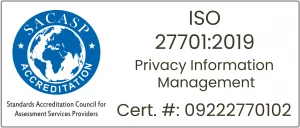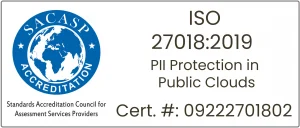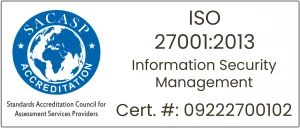© 2026 Macro Global. All Rights Reserved.
Traverse the article
Regulators now see data quality control as a frontline defence for financial stability. Errors in FSCS SCV submissions are no longer dismissed as clerical oversights. They are treated as red flags of deeper governance failures. Accuracy, completeness, and timeliness have shifted from IT best practice to non-negotiable regulatory imperatives.
The challenge has only intensified. FIs still struggle with siloed data, legacy core banking platforms, and manual reconciliations that crumble under regulatory stress tests. With the PRA requiring 24-hour SCV readiness and seven-day payout execution, fragmented processes and fix-it-later approaches are no longer viable. Increasingly, CIOs, CTOs, CCOs and CROs are accountable, with compliance outcomes resting as much on IT resilience and data governance as on risk or reporting functions.
This guide explores why data quality is the foundation of FSCS compliance, the risks weak governance creates, and how firms can embed robust controls directly into IT architecture. It is written for CIOs, CTOs, CCOs, CROs and programme leads seeking a practical playbook to shift from reactive reporting to resilient, regulator-ready SCV pipelines.
The Regulator’s Perspective: Why Data Quality Matters
Both the FCA and Bank of England have moved data quality to the forefront of supervisory agendas, demanding that firms treat FSCS SCV submissions as evidence of IT resilience, not paperwork.
The Increasing Regulatory Scrutiny
Financial institutions must shift from reactive fixes to proactive, technology-enabled governance frameworks that embed accuracy, completeness, and traceability across all SCV processes.
The focus should be on:
- FCA Multi-Firm Review: Exposed recurring lapses in data validation, ownership, incident responses and escalation, highlighting systemic vulnerabilities.
- SS18/15 Depositor protection: PRA SS18/15 (Depositor and dormant account protection) sets expectations on SCV, eligibility and continuity of access; the FSCS SCV guide details SCV and Exclusions View file requirements and secure submission.
- Supervisory Expectation: Firms must leverage automation and real-time validation; manual reconciliations alone no longer suffice, while spreadsheets can be permitted for some firms, the rules still require automatic identification of covered deposits and timely delivery
What Regulators Are Looking For
Regulators assess whether data governance frameworks are operationally and technically robust.
The factors are:
- Accuracy: End-to-end reconciliation between source systems and SCV files, with automated anomaly detection.
- Completeness: All eligible depositors captured, with exclusions justified, coded, and auditable.
- Timeliness: SCV readiness within 24 hours and seven-day payout mandates demand seamless, automated pipelines (the 24-hour period can begin at the end of the business day on which the request was made).
- Transparency: Every transformation, override, or exclusion must be traceable through auditable lineage visualisations.
- Delivery & Secure Transfer: Firms must be able to deliver both the SCV file, and an Exclusions View electronically within 24 hours, using secure transmission (e.g., SFTP with PGP).
Consequences of Poor Governance
Institutions that integrate automated validation, real-time monitoring, and auditable lineage into SCV reporting strengthen operational resilience, minimise risk, and build lasting trust with stakeholders.
They are weakened by:
- Delayed Payouts: Misaligned depositor records risk regulatory breaches and customer harm.
- Lineage Gaps: Lack of traceability weakens systemic oversight and exposes hidden risks.
- Ineffective Escalation: Issues not addressed in real time amplify compliance exposure.
- Leadership Accountability: Boards, CIOs, and CTOs are increasingly answerable for governance lapses.
- Regulatory Action: Regulators fine the failed firms for historic depositor-protection failings, including incorrect eligibility identification, underscoring that gaps in systems, controls and governance invite sanctions.
The Business Case for Data Quality in FSCS Reporting
When payouts depend on accurate, timely SCV files, weak controls directly translate into consumer harm and systemic risk. CIOs and CTOs who treat data governance as strategic, rather than operational, gain both regulatory goodwill and competitive advantage.
FSCS Compensation Framework
Errors in depositor records can distort payouts, undermining both trust and financial stability.
It is important to understand:
- How SCV Works: The FSCS relies on SCV files to identify eligible depositors and calculate compensation within mandated timelines. Every error in depositor data distorts compensation estimates.
- Impact of Poor Quality: Inaccuracies mean some depositors are underpaid, others overpaid, and regulators lose confidence in the firm’s controls. Such failures undermine both consumer protection and financial stability.
- Consumer Protection at Risk: In crisis events, delays caused by bad data compound consumer stress, eroding trust in both the institution and the safety net.
Financial and Reputational Risks
Weak data controls translate directly into financial penalties and long-term brand damage.
The risks include:
- Regulatory Penalties: Firms that fail mock drills or submit flawed SCV files risk fines, remediation orders, and intrusive supervisory oversight.
- Reputational Fallout: Publicised failures damage depositor trust and can trigger outflows, hurting long-term competitiveness.
- Enforcement Precedent: Regulators have shown willingness to sanction institutions where data weaknesses create systemic exposure, treating poor controls as governance lapses rather than IT glitches.
Trust and Consumer Protection
Investing in data quality reduces regulatory risk, protects reputation, and strengthens consumer trust.
The factors to focus on are:
- Building Trust: Strong data governance demonstrates to customers that their deposits are safeguarded, even in the worst-case scenario.
- Institutional Stability: Firms with resilient data pipelines support faster payouts, smoother audits, and stronger supervisory relationships.
- Systemic Contribution: Robust data quality reinforces confidence in the wider banking system, a critical public good in times of stress.
Key Challenges in Data Quality Control for FIs
Data passes through fragmented systems, legacy architectures, and manual processes that magnify risk at every stage.
Below are the three biggest challenges CIOs, CTOs, and compliance leaders must confront.
Data Complexity in Financial Institutions
From customer accounts to regulatory reports, multiple systems and formats multiply the risk of errors.
The factors to consider are:
- Scale of the Problem: FIs manage data spanning customer onboarding (KYC), transactional flows, credit, treasury, and regulatory reporting. Each dataset has its own schema, lineage, and validation requirements.
- Why It Matters: The sheer diversity makes maintaining accuracy, completeness, and timeliness difficult. Without consistent controls, quality gaps emerge, particularly in critical reporting like FSCS SCV.
- Leadership Imperative: Data requires ownership from business leaders who understand how operational data impacts regulatory outcomes.
Fragmented Data Systems
Inconsistent data structures and disconnected workflows increase errors and regulatory exposure.
The risks are:
- Legacy Burdens: Many banks still rely on decades-old core banking systems that don’t integrate easily with modern reporting demands. This creates silos and inconsistent structures.
- The Modern Fix: Data lakes and advanced analytics promise a unified view, but can themselves create swamps if governance is weak. Without metadata standards, lineage tracking, and rule explainability, complexity increases rather than decreases.
- Compliance Exposure: When integration is patchy, firms risk mock drill failures not because reports are inaccurate, but because data never flows fast enough to produce them.
The Human Element in Data Management
Errors often stem from routine tasks and judgment calls, highlighting the need for accountability and training.
How can we eradicate them?
- Beyond Admin Errors: Mistakes in data entry, reconciliation, or exception handling are often blamed on human error. In reality, these are symptoms of weak systemic design.
- Cultural Blind Spot: Too many institutions treat data errors as IT or back-office issues. Regulators now expect a cultural shift, where business leaders own the quality of the data flowing into their reports.
- Fixing the Root Cause: Embedding automated controls, validation harnesses, and exception logging reduces reliance on manual checks and ensures auditability under stress.
The Core Principles of Effective Data Quality Control
Regulators like the FCA and Bank of England have made it clear that FIs are accountable for every data point, from their strong governance frameworks that embed accuracy and transparency across all reporting systems.
Building a Data Governance Framework
Accurate, traceable, and timely SCV data starts with a solid governance framework in every bank.
The factors include:
- Clear Ownership: Data curators manage accuracy at the source, while quality assurance teams oversee monitoring and escalation. This prevents the scenario of everybody owning it, so nobody owns it.
- Regulatory Alignment: The Bank of England stresses the importance of data lineage, transparency, and validation. Institutions must be able to show not just outputs but also how the data got there.
- Governance as Culture: Effective governance is cultural as much as structural. It ensures business leaders, not only IT, are accountable for data quality outcomes.
Data Quality Metrics
Key metrics allow banks to monitor, manage, and continuously improve SCV data integrity.
The metrics are:
- The Four Anchors: Regulators consistently reference completeness, consistency, timeliness, and accuracy as the benchmarks for high-quality data.
- How to Measure: Dashboards, scorecards, and exception reports allow CIOs and compliance leaders to continuously monitor gaps across these metrics.
- Iterative Approach: Data quality is not a “one and done” task. Leading firms adopt continuous improvement loops, tightening validation and remediation with every cycle.
Automated Validation and Reconciliation
Automation creates an auditable trail, giving regulators clear visibility into data transformations and corrections.
Let us explore it from diverse angle:
- Why It Matters: Manual reconciliation cannot withstand today’s volume and regulatory stress tests. Automation ensures consistency, scalability, and auditability.
- Tools in Practice: Reconciliation engines, schema-diff tools, and AI-powered anomaly detection systems catch errors at speed and scale.
- Real-Time Controls: Regulators now expect validation in the flow rather than end-of-process fixes. The FCA’s benchmarks highlight the need for proactive, real-time checks that prevent errors before they cascade downstream.
Best Practices for FSCS SCV Reporting
For CIOs and CTOs, SCV data is a frontline defence for financial stability. Firms must demonstrate accuracy, traceability, and resilience under stress. Embedding best practices across technology and culture ensures regulatory compliance and operational confidence.
Data Lineage and Traceability
Transparent data flow is critical for banks to prove FSCS SCV accuracy. Regulators expect clear visibility from source systems to final reports.
Attention must centre on:
- Regulatory Expectation: Regulators expect firms to clearly show how depositor records flow from core banking, KYC, and CRM systems into SCV reports. Transparent lineage builds trust.
- Automated Lineage: Deploy tools that document every transformation—from ETL mapping, through SCV schema alignment, to FSCS submission files (XML, CSV or XLSX as per FSCS specs) output—to ensure accuracy and audit readiness.
- Schema Validation: Use schema-diff validation to detect mismatches early, preventing silent errors from affecting SCV reports.
- End-to-End Visibility: Maintain dashboards that provide a full “source-to-report” view, enabling rapid validation and smooth inspections or stress tests.
Data Stewardship and Ownership
Strong ownership ensures accountability and prevents fragmented data management and is regarded as one of the prime responsibilities of stringent governance.
The key priorities are:
- Ownership Accountability: Clear ownership reduces fragmented accountability. Regulators view stewardship as a governance imperative.
- Domain Stewards: Assign dedicated data stewards for each domain (CBS balances, exclusions, KYC attributes).
- Integrated Oversight: Integrate stewardship roles with enterprise IAM for visibility and audit readiness.
- Stewardship KPIs: Track KPIs such as reconciliation closure rates and responsiveness to audit queries to reinforce accountability.
Frequent Audits and Reporting
Regulators now demand that data integrity is continuously verified, making audits and reporting a daily operational priority.
The main area of concentration should be:
- Continuous Assurance: Annual reviews are no longer sufficient; ongoing assurance ensures SCV pipelines operate reliably.
- Automated Reconciliations: Automate reconciliations between CBS, KYC, and SCV exports to detect anomalies in real time.
- Dashboards and Monitoring: Build dashboards tracking depositor record readiness, flagged exclusions, and audit issues.
- Drill Simulations: Conduct stress-test simulations to identify vulnerabilities before they impact regulatory reporting.
Incident Management and Rapid Response
Banks must anticipate disruptions, respond decisively, and maintain an auditable record, proving their SCV pipelines are robust under pressure.
Attention needs to be directed towards:
- Resilience Principle: Quickly and transparently setting everything back to normalcy after an incident is essential. Regulators review incident logs as part of governance assessment.
- Automated Alerts: Implement alerting for failed exports, missing schema fields, or other anomalies.
- Rollback Pipelines: Design rollback-ready pipelines with point-in-time restore for depositor records.
- Escalation Protocols: Establish playbooks ensuring IT, Risk, and Compliance collaborate immediately to resolve incidents and maintain SCV integrity.
Leveraging Technology for Enhanced Control
Banks that integrate data management with automated checks and lineage monitoring gain resilience and regulatory confidence. Also, keeping the data consistent and reliable is mandatory.
Data Management Tools
Advanced management tools allow institutions to consolidate, monitor, and control information before it reaches regulators.
Priority should be given to:
- Unified Data Landscape: Data lakes and cloud-native platforms give institutions the ability to pull CBS, CRM, and KYC records into a single, consistent repository, eliminating silos that traditionally slow SCV readiness.
- Governance-by-Design: Modern architectures must embed controls such as lineage tracking, quality validation rules, and role-based access at the ingestion stage. Retrofitting governance later only magnifies complexity.
- Elastic Scale for Stress Scenarios: Cloud platforms allow on-demand scaling to handle FSCS stress tests, such as generating full SCV reports within 24 hours, without over-provisioning infrastructure.
- Data Virtualisation and Interoperability: Instead of copying data across systems, virtualisation tools let firms query depositor information in place, reducing duplication risks while ensuring accuracy.
- Regulator Confidence through Standardisation: Standard schemas, metadata dictionaries, and API-driven integrations allow firms to demonstrate consistency across systems, a core expectation in PRA/BoE reviews.
AI and Automation
By embedding AI into reconciliation and validation workflows, banks move from reactive fixes to proactive assurance of SCV integrity:
The central objective should be:
- Continuous Anomaly Detection: AI engines monitor depositor data flows in real time, flagging duplicates, eligibility mismatches, or dormant-to-disputed shifts before they hit SCV file generation.
- Automated Reconciliation at Scale: Machine learning can reconcile millions of records across CBS, CRM, and KYC systems, spotting breaks in lineage that human checks would miss.
- Explainable AI for Regulators: CIOs must ensure every AI decision is accompanied by a transparent rationale, to continuously withstand PRA/FSCS scrutiny.
- Proactive Compliance Alerts: Automated systems should not only detect but also escalate anomalies into structured workflows, giving risk teams time to remediate before regulatory deadlines.
- Audit-Ready Transparency: Best practice is to embed AI outputs into immutable logs, with hash validation and timestamps, so regulators see every flagged issue and its resolution path.
Real-Time Data Monitoring
Proactive monitoring transforms SCV pipelines from reactive reporting tools into resilient, stress-tested infrastructures.
Critical attention must concentrate on:
- Continuous SCV Health Checks: Instead of waiting until file generation, every depositor record is validated on ingestion, with exclusion flags, duplicates, and eligibility mismatches surfaced instantly.
- Regulator-Ready Dashboards: CIOs should demand drill dashboards that display data readiness in real time – % completeness, lineage gaps, and validation errors — so that a regulator’s question can be answered “on screen,” not after a week of manual collation.
- Predictive Alerts & Early-Warning Signals: Machine learning models can anticipate data degradation trends (e.g., growing reconciliation mismatches, schema drift) and alert teams before they affect FSCS reporting.
- End-to-End Transaction Traceability: Monitoring should not stop at the data layer, where the CIOs should ensure that every deposit event can be traced across CBS → KYC → SCV → FSCS specified output files, with time-stamped checkpoints to prove data integrity.
- Closed-Loop Remediation: Best-in-class systems don’t just flag issues; they auto-route anomalies into correction workflows, with audit trails proving that each fix is controlled, repeatable, and regulator-traceable.
Building a Proactive Data Quality Culture
Cultural Mindset
Organisations must cultivate a mindset where data quality is prioritised at every level, making accuracy and accountability a shared responsibility.
Central to this approach is:
- From Compliance to Ownership: Data quality is a governance issue, not just an IT responsibility. Boards and senior leaders should actively sponsor programmes that track SCV readiness alongside other critical risk metrics.
- Every Role, Every Touchpoint: Errors during onboarding, account updates, or reconciliations can cascade into SCV failures. Staff must understand that each interaction with data has direct regulatory implications.
- Leadership Signals: Leaders who routinely check for regulator-ready data embed accountability and make data quality a visible, organisation-wide responsibility
Training and Awareness
Continuous training and awareness ensure employees can connect compliance objectives with system capabilities, data pipelines, and automated validation processes.
The focus must be on:
- Continuous Learning: Regular quarterly refreshers on FSCS mandates, internal audit findings, and regulator observations reinforce awareness and embed compliance as an ongoing responsibility.
- Scenario-Based Training: Hands-on simulations, such as misclassified dormant accounts or delayed SCV generation, help staff understand how operational errors propagate through systems, emphasising both functional impact and technical resolution.
- New Competencies: Staff should be trained on advanced tools, including data lineage platforms, AI-driven anomaly detection, real-time validation dashboards, and schema-diff monitoring. This ensures they can manage complex data flows, explain automated outputs, and respond proactively to discrepancies in a regulator-ready manner.
Cross-Departmental Collaboration
Effective data governance requires breaking down silos so IT, risk, operations, and compliance work together seamlessly.
Let us explore them:
- Breaking Silos: Establish governance councils with representatives from all critical functions to oversee end-to-end SCV processes, ensuring alignment on quality standards and regulatory expectations.
- Unified Escalation: Data anomalies should trigger immediate alerts to all relevant teams, enabling rapid resolution rather than relying solely on periodic reviews.
- Shared KPIs: Define joint performance indicators, such as data lineage completeness, reconciliation accuracy, and SCV readiness. These metrics ensure all teams share accountability and continuously improve data quality across the organisation.
The Future of Data Governance in FIs
Data governance is evolving from a compliance necessity to a strategic advantage. FIs that embed quality, transparency, and agility at the core of their data operations will lead the way in FSCS compliance and risk resilience.
Anticipating Regulatory Changes:
FIs must stay ahead of evolving regulatory expectations to ensure FSCS SCV readiness. Proactive adaptation to new rules and reporting standards is key to sustained compliance and operational resilience.
The aspects include:
- From Static to Adaptive Compliance: Regulators are tightening timelines. With PRA mandating 24-hour SCV readiness, FIs are expected to demand greater explainability, lineage, and real-time auditability. Firms need governance models that adapt dynamically, not reactively.
- Emerging RegTech Integration: RegTech platforms will reshape reporting, automating validation, anomaly detection, and even regulatory submissions. Institutions that embed RegTech early will enjoy faster compliance cycles and reduced manual overhead.
- Digital Transformation as Enabler: Cloud migration, API-driven data pipelines, and AI-based monitoring are not optional. These shifts allow firms to scale, consolidate data across silos, and meet FSCS accuracy demands at pace.
Data as a Strategic Asset:
High-quality, well-governed data strengthens risk management, operational efficiency, and consumer trust.
Let us introspect them:
- Beyond Compliance Costs: Treating data purely as a regulatory burden blinds firms to its strategic value. High-quality depositor data enhances customer segmentation, enables product innovation, and improves risk modelling.
- Strengthening Trust: A firm that demonstrates SCV accuracy and payout readiness reinforces consumer confidence and positions itself as safer and more reliable in times of crisis.
- Operational Efficiency: Clean, well-governed data reduces reconciliation costs, accelerates onboarding, and frees resources from error-handling, creating both compliance resilience and competitive advantage.
Conclusion
Data quality is now the visible proxy for governance. Under a 24-hour SCV readiness expectation and a seven-day payout target, weaknesses in lineage, validation, and escalation translate directly into operational and regulatory risk. The answer isn’t more manual checks; it’s engineering quality into the data path and the operating model—so eligible deposits are readily identifiable, exceptions are contained, and drills feel routine rather than heroic.
For CIOs, CTOs, CCOs and CROs, the practical move is to treat SCV as a standing capability: automate validations at source, keep lineage audit-ready, rehearse the 24-hour clock, and measure what matters. Institutions that do this reduce remediation effort, shorten incident response, and protect depositor confidence when it counts.
What good looks like
- Files: SCV and Exclusions View in PRA-aligned schema; secure transfer (SFTP/PGP).
- Timing: Deliverable in 24 hours (clock can start EOD of request); FSCS payout in seven working days.
- Controls: End-to-end lineage, automated validation, versioned audit trail, RBAC.
- Pitfalls to avoid (top 5): joint-account roll-ups; duplicates; weak identifiers; product-to-eligibility mis-mapping; THB (temporary high balance) window/evidence gaps.
- Readiness targets (internal): ≥99.5% coverage; <1% exceptions at T-24h; person-level totals = account-level totals by product and source.
Transform your FSCS SCV reporting today with our all-in-one Enterprise Solution Suite! Reach us to know more!
Related Posts
19 November 2025 FSCS Single Customer ViewRegulatory Technology
PRA PS24/25 & SS18/15: Detailed Compliance Bulletin for FSCS Limit Update
Key compliance actions under PRA PS24/25 and SS18/15 for FSCS limit updates, SCV changes and disclosure obligations.
18 November 2025 FSCS Single Customer ViewRegulatory Technology
Regulatory Update: FSCS Deposit Protection Limit Rising to £120,000 – Key FSCS SCV Reporting Changes for Banks and Deposit Taking firms
FSCS changes for 2025 raise the protection limit to £120k. See what banks and other Fis must do for SCV reporting, THB updates, and regulatory compliance under the new rules.
18 November 2025 FSCS Single Customer ViewRegulatory Technology
SCV and Cloud Adoption for PRA & FSCS Compliance: A Guide to Operational Resilience
Learn how cloud-enabled SCV strengthens PRA and FSCS compliance, improves operational resilience, and enhances depositor protection for financial institutions.














